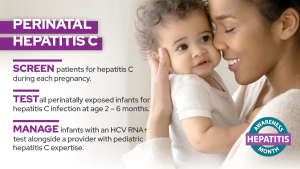Hepatitis C, a potentially deadly but curable liver infection, is often referred to as a “silent epidemic” for good reason. According to the CDC, nearly 2.4 million people in the United States live with chronic Hepatitis C—and many of them don’t know it. In New York, a city shaped by immigrants and communities of color, the problem is especially urgent. Barriers to testing, cultural stigma, and limited access to care have left thousands—particularly among Black, Latino, and immigrant populations—undiagnosed and untreated.
This article outlines what Hepatitis C is, why certain populations are at higher risk, and what steps individuals and community leaders can take to detect and fight this underrecognized public health crisis.
What Is Hepatitis C?
Hepatitis C is a viral infection that primarily attacks the liver. The virus is spread through contact with infected blood, often through:
– Sharing needles or syringes
– Unsafe healthcare procedures or blood transfusions (particularly outside the U.S. before the 1990s)
– Birth from a Hepatitis C-positive mother
– In rare cases, unprotected sex or sharing personal items like razors or toothbrushes
The virus can cause both acute (short-term) and chronic (long-term) infections. Chronic Hepatitis C, if left untreated, may lead to liver damage, cirrhosis, liver failure, or liver cancer. Yet, early symptoms are often mild or nonexistent, causing many to remain unaware of their infection for years.
The Urgency in New York’s Immigrant and Minority Communities
In New York State alone, it is estimated that tens of thousands live with Hepatitis C, and the burden is disproportionately carried by Black and Latino residents, as well as immigrants from countries where the virus is endemic.
According to the New York State Department of Health, Hepatitis C rates among Black and Hispanic populations are significantly higher than among white residents. Among immigrants, especially those from sub-Saharan Africa, the Caribbean, the Middle East, and parts of Asia, many may have contracted the virus through non-sterile medical procedures before arriving in the U.S.
Undocumented immigrants, despite being at risk, often avoid seeking medical attention due to fear of deportation or lack of health insurance. Language barriers, medical mistrust rooted in historical injustices, and the stigma associated with a diagnosis of “hepatitis” further compound the problem.
Testing and Diagnosis: A Critical Step Forward
Testing for Hepatitis C involves a simple blood test. New York State law mandates that healthcare providers offer Hepatitis C testing to:
– All adults aged 18 and older
– Pregnant individuals during each pregnancy
– People with risk factors such as injection drug use or exposure to infected blood
Unfortunately, many people still fall through the cracks—especially those without regular access to healthcare. Many in immigrant communities do not undergo routine bloodwork or even have a primary care provider.
Free or low-cost testing is available throughout New York City via clinics, community health centers, and mobile health units. Local organizations like the African Services Committee, BronxWorks, and Apicha Community Health Center offer culturally sensitive screening and education programs specifically targeting underserved populations.
Treatment: A Cure Exists
Unlike many chronic diseases, Hepatitis C is curable. New antiviral medications, known as direct-acting antivirals (DAAs), can eliminate the virus in 8–12 weeks in most cases. These medications are highly effective and have minimal side effects.
But the promise of treatment is not always matched by access. Insurance requirements, delays in diagnosis, and lack of follow-up disproportionately affect people of color and those in immigrant communities. Some patients are unaware that they qualify for Medicaid or that New York City offers assistance programs to cover the cost of medication.
Health advocates stress the importance of connecting patients to care immediately after diagnosis. Delays can lead to severe liver complications or death, despite the availability of a cure.
Breaking the Silence: Combating Stigma and Misinformation
Many still view Hepatitis C as a disease linked only to drug use, leading to silence and shame. But this narrative ignores the millions who were infected through medical procedures, transfusions, or vertical transmission (from mother to child). Among Caribbean, Latin American, African, and South Asian families, stigma and misinformation can discourage people from getting tested—even when symptoms appear.
Faith-based organizations, barbershop health programs, and immigrant community associations can play a transformative role in breaking the silence. By hosting information sessions, partnering with health departments, and inviting trusted local leaders to speak openly, these groups can normalize testing and treatment.
What Community Leaders and Policy Makers Must Do
To reduce the number of undiagnosed Hepatitis C cases, we must focus on:
1. Education: Launch culturally tailored public health campaigns in multiple languages.
2. Accessibility: Expand free or mobile testing services in immigrant neighborhoods.
3. Trust Building: Train community health workers and navigators from within the affected communities.
4. Healthcare Reform: Ensure Medicaid, Medicare, and private insurers cover screening and treatment without unnecessary delays or denials.
The New York City Council and Department of Health have already begun efforts to prioritize Hepatitis C elimination, but implementation at the grassroots level—especially within communities of color—is essential for success.
Final Word: Know Your Status, Protect Your Health
If you are over 18, have ever received a blood transfusion before 1992, were born in a country with limited healthcare infrastructure, or have ever shared needles, you should get tested.
For immigrants and people of color in New York, knowledge truly is power. Knowing your Hepatitis C status could save your life or the life of someone you love. Hepatitis C is no longer a death sentence—but silence and inaction can be.
To find free or low-cost Hepatitis C testing in New York, visit:
– nyc.gov/health
– hepfree.nyc
Let’s bring the hidden epidemic out of the shadows and into the care it deserves.


